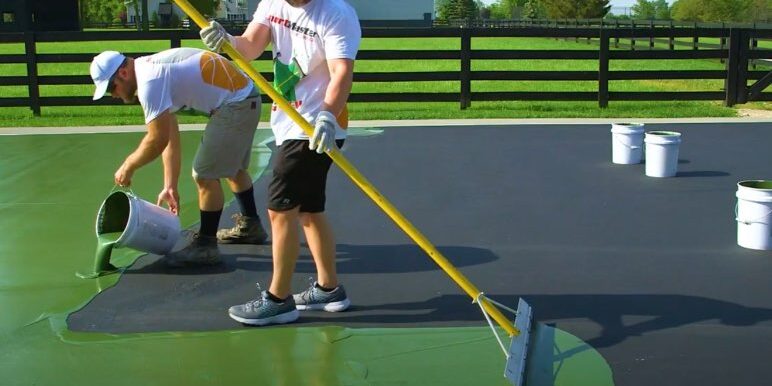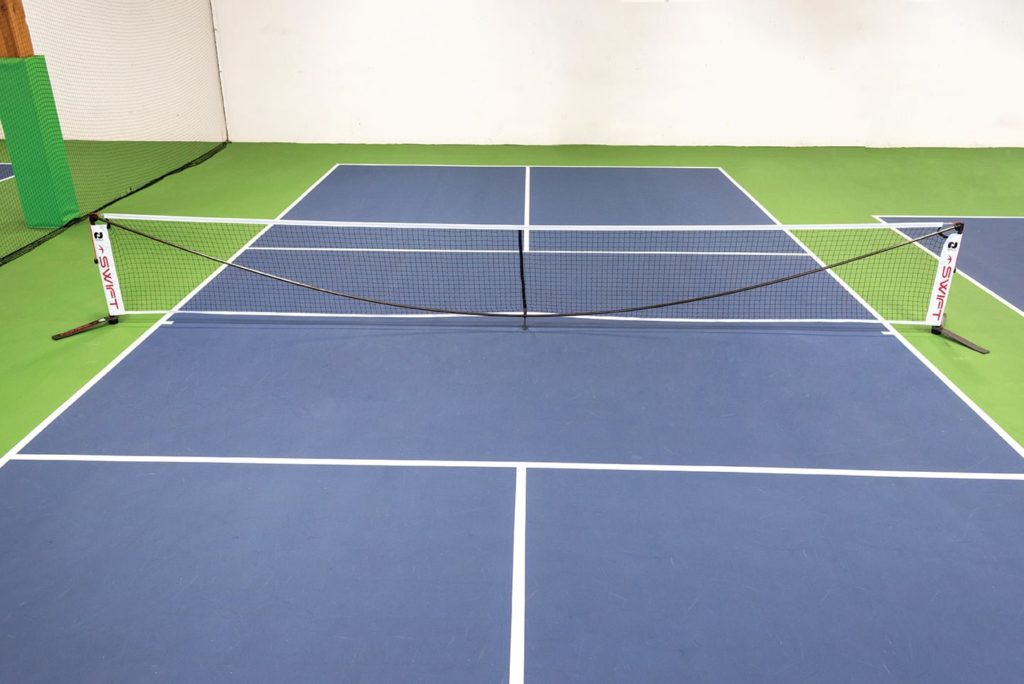Interior and Outside Pickleball Court Construction Services
Interior and Outside Pickleball Court Construction Services
Blog Article
Lasting Practices in Pickleball Court Building And Construction You Must Know
As the popularity of pickleball continues to rise, so too does the need for lasting practices in court construction. This strategy not just addresses ecological problems but also improves the long life and capability of the courts. From selecting green products to executing efficient drainage and energy-saving lighting remedies, there are various techniques to think about. The influence of these techniques expands much beyond the court itself. Understanding exactly how each aspect contributes to a much more lasting future invites better expedition right into the complex balance in between leisure development and ecological stewardship.
Selecting Eco-Friendly Materials
Selecting environmentally friendly products is a crucial action in the building of lasting pickleball courts. The choice of lasting materials not only lessens environmental impact yet additionally boosts the durability and efficiency of the court. Trick products consist of recycled rubber for the surface, which uses excellent longevity and shock absorption while diverting waste from land fills.
Furthermore, making use of in your area sourced products lowers transportation discharges and supports regional economic situations. Pickleball court construction. Utilizing native hardwoods for fencing and seating can provide a sustainable visual while making certain resilience against the aspects.
Including absorptive materials for court structures can further add to sustainability by enabling for natural water drain and reducing runoff. These choices not only shield local communities but additionally advertise healthier play settings.
Reliable Drainage Solutions
While the selection of environment-friendly products is essential, implementing efficient drain options is equally important for maintaining lasting pickleball courts. Correct water drainage not just secures the court surface area from water damage however additionally minimizes disintegration and drainage, advertising environmental stability.
Efficient drain systems can consist of permeable paving, which enables water to infiltrate the ground instead of merging externally. This reduces the likelihood of standing water, which can bring about mold and mildew and other upkeep problems. Additionally, integrating purposefully placed drainage networks and swales can guide excess water far from the court area, ensuring a completely dry playing surface area and preventing soil disintegration.
Using indigenous vegetation in the landscape design around the courts can additionally boost drain by absorbing excess water and lowering overflow. These plants call for less irrigation and promote biodiversity, lining up with lasting practices.
Additionally, it is important to consistently preserve the drain system to ensure its long-term performance. This consists of clearing up particles and tracking for blockages. By focusing on effective water drainage options, pickleball court constructors can substantially add to the sustainability and long life of the facility, eventually profiting both players and the setting.
Energy-Efficient Illumination Options
As the need for pickleball remains to grow, incorporating energy-efficient lights alternatives right into court layout has become progressively essential for sustainability. Conventional lighting systems usually eat too much power, adding to higher operational prices and ecological impact. Adopting contemporary, energy-efficient innovations reference is vital for both new constructions and remodellings.
LED (Light Emitting Diode) lights attracts attention as a premier option because of its longevity and power financial savings (Pickleball court construction). Contrasted to conventional illumination, LEDs use about 75% much less power and can last approximately 25 times longer, considerably lowering upkeep expenses. The directional nature of LED lights lessens light contamination, making sure that lighting is concentrated on the court instead than bordering locations.

Lasting Surface Alternatives
Exploring sustainable surface alternatives for pickleball courts has acquired grip among players and home builders alike. The emphasis on environmentally friendly products not only lines up with the growing environmental recognition yet likewise improves the performance and resilience of the courts.
One preferred alternative is using recycled rubber, which can be sourced from used tires. This material gives exceptional shock absorption, decreasing the risk of injuries for players while advertising sustainability. Furthermore, modular tiles made from recycled plastics provide an additional viable option. These floor tiles are easy to mount and change, and their adaptability permits for different court configurations.
Natural lawn courts are also becoming a sustainable choice, advertising biodiversity and minimizing the warmth island result. They call for regular maintenance and water, which might not align with all go to my site sustainability goals.

Water Preservation Strategies

An additional reliable method includes the installment of rainwater harvesting systems. These systems save and accumulate rainwater for use in preserving court surfaces and landscaping. This approach not only saves drinkable water yet likewise lowers reliance on municipal resources.
Additionally, using drought-resistant landscape design around the courts is vital. Indigenous plants call for less water and are much better adapted to neighborhood environment problems, therefore decreasing overall water consumption. In addition, using reliable watering systems, such as drip irrigation, makes certain that water is provided straight to plant origins, reducing evaporation and waste.
Conclusion
Integrating sustainable practices in pickleball court building significantly adds to ecological preservation and source performance. Making use of eco-friendly materials, carrying out efficient drain remedies, and taking on energy-efficient illumination choices can greatly decrease eco-friendly effect. Furthermore, discovering lasting surface area this contact form options and utilizing water conservation strategies improve the overall sustainability of these leisure facilities - Pickleball court construction. By prioritizing these techniques, the building of pickleball courts can straighten with broader environmental objectives while advertising long life and functionality within areas.
As the popularity of pickleball continues to rise, so too does the requirement for sustainable practices in court building.Choosing environmentally friendly products is a vital step in the building of sustainable pickleball courts. By focusing on energy-efficient lights alternatives, pickleball court erectors can add to a much more lasting future while satisfying the requirements of stakeholders and gamers alike.Integrating sustainable surface area choices not only boosts the performance of pickleball courts but additionally paves the way for applying efficient water preservation methods.Incorporating lasting practices in pickleball court building and construction substantially contributes to ecological preservation and resource efficiency.
Report this page